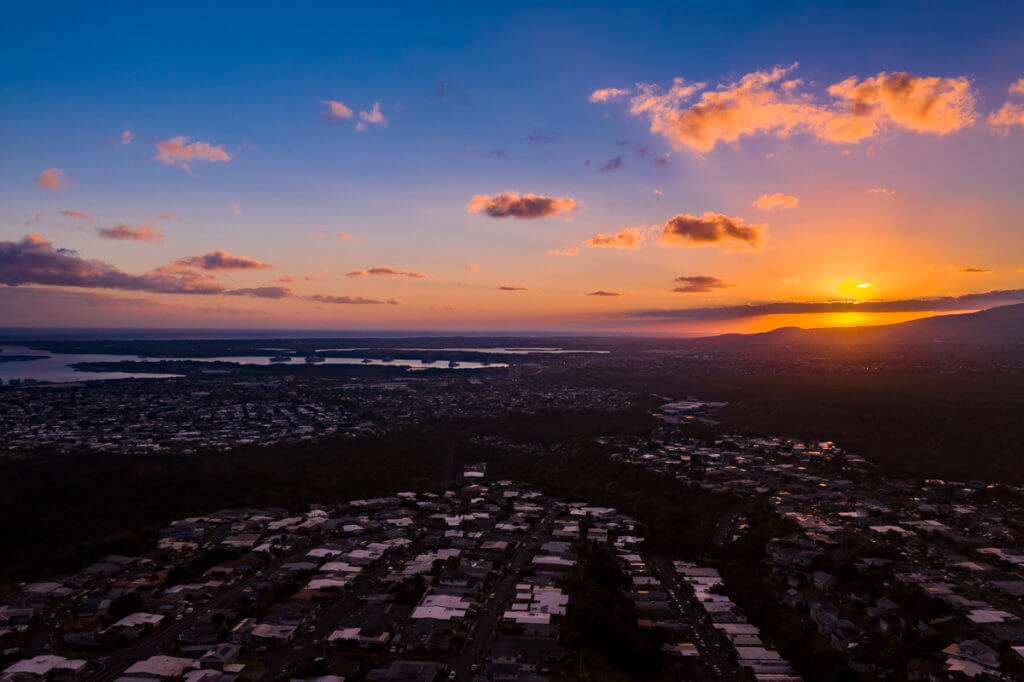Last updated on January 13th, 2019 at 03:56 pm
I’ve been flying drones for only seven months now and am learning new things all the time, especially regarding regulations. And while Federal regulations are clear, State ones aren’t always so clear. So let’s go over drone flying in Hawaii.
Federal Regulations
The Federal Regulations surrounding drone use are a bit confusing. I had to do much research prior to flying for the first time and I’m still by no means an expert. But, as far as I know, here are the basics you need to know before flying:
- Register your drone under FAA Part 107 Regulations
- Keep your registration card on you when flying and label your drone with your registration number
- When flying, keep your drone under 400 feet and within line of sight
- Do not fly over large crowds of people, over vehicles, under a covered structure, inside a stationary vehicle, at night, or within five miles of an airport
- Seek air traffic control permission when operating in class B, C, D, and E airspace
- No flying in National Parks

Of course, the 400-foot rule does have a workaround. You can fly higher than 400 feet, as long as you’re flying above an object and stay within 400 feet of it both in distance and height. And while you can operate without obtaining a license, you can’t use your drone for commercial reasons without it. That means no selling your photos or videos, even on microstock sites. Plus, operating commercially will void any Personal Article Policies you took out on your drone too.
Hawaii Specific Regulations
Beyond the above Federal regulations, Hawaii has State-specific regulations you need to be aware of too. More specifically, drones cannot take-off from, fly in, and land in State parks. And in case you’re wondering, here’s a listing of all State Parks in Hawaii:
- Oahu
- Ahupua’a O Kahana State Park
- Aiea Bay State Recreation Area
- Diamond Head State Monument
- He’eia State Park
- Iolani Palace State Monument
- Ka’ena Point State Park
- Kaiwi State Scenic Shoreline
- Keaiwa Heiau State Recreation Area
- La’ie Point State Wayside
- Malaekahana State Recreation Area
- Nu’uanu Pali State Wayside
- Pu’u O Mahuka Heiau State Historic Site
- Pu’u Ualaka’a State Wayside
- Queen Emma Summer Palace
- Royal Mausoleum State Monument
- Sand Island State Recreation Area
- Ulupō Heiau State Historic Site
- Waʻahila Ridge State Recreation Area
- Wahiawā Freshwater State Recreation Area
- Maui
- Halekiʻi-Pihana Heiau State Monument
- ʻĪao Valley State Monument
- Kaumahina State Wayside
- Mākena State Park
- Pālāʻau State Park (Molokai)
- Polipoli Spring State Recreation Area
- Puaʻa Kaʻa State Wayside
- Waiʻānapanapa State Park
- Wailua Valley State Wayside
- Kauai
- Ahukini State Recreational Pier
- Hāʻena State Park
- Kōkeʻe State Park
- Nāpali Coast State Wilderness Park
- Russian Fort Elizabeth State Historical Park
- Polihale State Park
- Wailua River State Park
- Waimea Canyon State Park
- Waimea State Recreational Pier
- Big Island
- ʻAkaka Falls State Park
- Hāpuna Beach State Recreation Area
- Huliheʻe Palace
- Kalōpā State Recreation Area
- Kealakekua Bay State Historical Park
- Kekaha Kai (Kona Coast) State Park
- Kīholo State Park Reserve
- Kohala Historical Sites State Monument
- Lapakahi State Historical Park
- Lava Tree State Monument
- MacKenzie State Recreation Area
- Manukā State Wayside
- Wailoa River State Recreation Area
- Wailuku River State Park

Hawaii State Park Implications
That’s a lengthy list of parks! And, unfortunately, the list includes many places I’ve been thinking of flying my drone from — especially the Kaiwi State Scenic Shoreline along with its Makapuu Lighthouse Hike. Did I mention that I’ve already flown my drone over Diamond Head as well? Oops.
Now, I can appreciate wanting to protect popular sites, but I think the State of Hawaii is going about this the wrong way. Yes, it appropriate to ban drone operations over culturally sensitive sites like a heiau, but a beach? Come on! Why not restrict drone overflights to at least 100 feet above ground-level? At that height, most won’t even notice the droner its prop noise anyway. And it’ll be up to the operator to adhere to applicable Federal regs like not flying over other people.
Drone Flying in Hawaii, Final Thoughts
The Hawaiians are small landmasses that have a surprising number of airports and military installations. As a result, there aren’t a lot of places you can fly a drone here. Add in the State of Hawaii’s own regulations and our drone flying options are even more limited. Not to mention that many of these State Parks are the places you’d want to fly your drone, to begin with. And, clearly, there are better regulatory options available, but it is Hawaii, so I can’t say I’m surprised.
